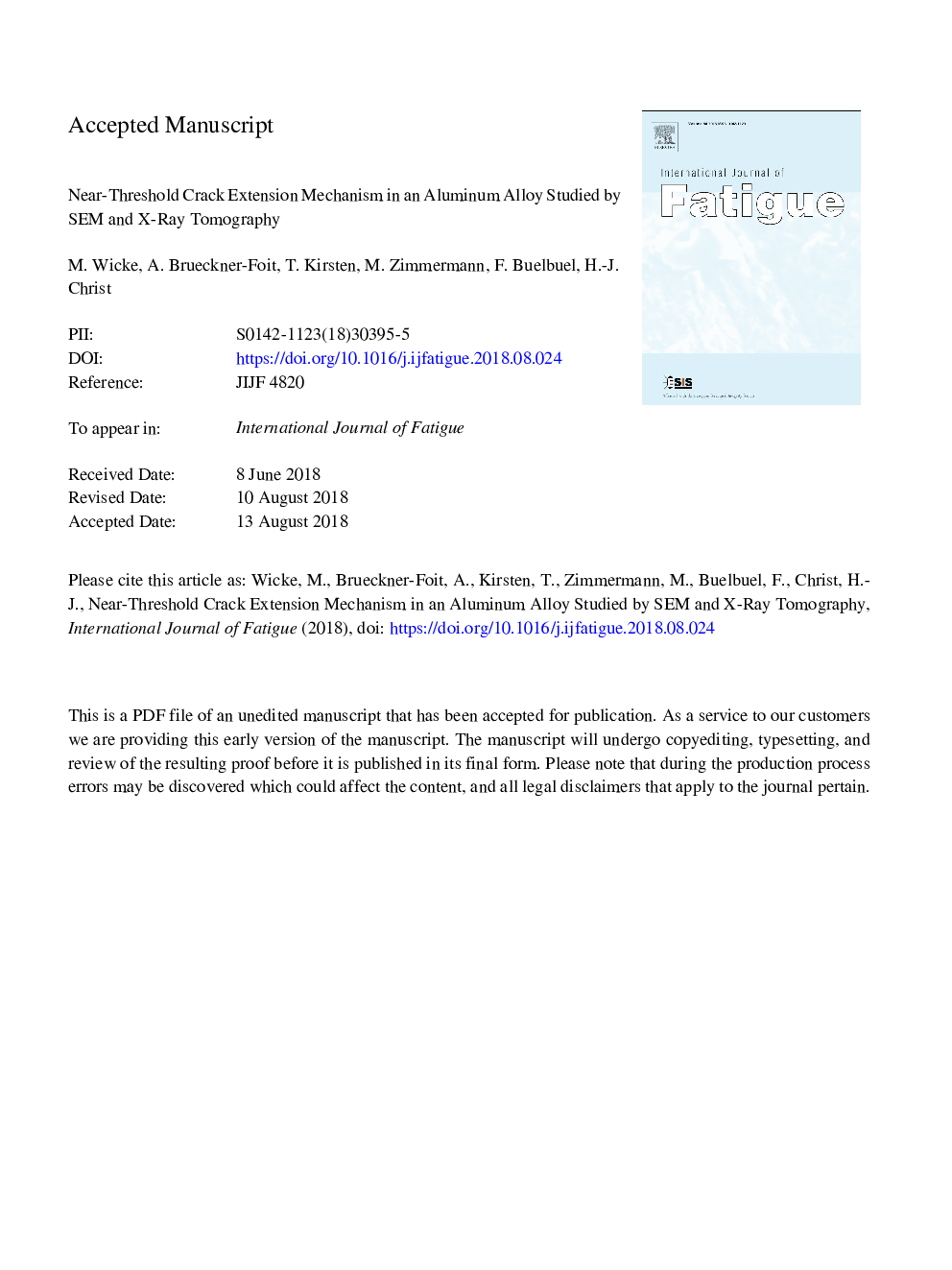| Article ID | Journal | Published Year | Pages | File Type |
|---|---|---|---|---|
| 11016304 | International Journal of Fatigue | 2019 | 17 Pages |
Abstract
The crack extension behavior of long cracks in the near-threshold regime is analyzed at Râ¯=â¯0.1 using flat dog-bone specimens of a commercial aluminum alloy in peak-aged and overaged condition. Once a pre-crack had been introduced by cyclic compression, experiments were performed at nominally constant ÎK-values close to the threshold initially determined by continuous load increase. Analyses of the fractured specimens in SEM and µ-CT show that two major mechanism caused the cracks propagating in an intermittent way. First, the crack front was pinned by primary precipitates leading to ductile bridges on the fracture surfaces. Overaging was observed to generally enhance the pinning potential of the precipitates. The second mechanism was crack extension in a shear-dominated mode but dissimilar to stage-I crack growth. This effect was rather pronounced in the case of cracks propagating parallel to elongated grains and to lines of primary precipitates. Interaction with microstructural barriers deflected the cracks in shear-controlled extension mode, but did not change the general tendency.
Related Topics
Physical Sciences and Engineering
Engineering
Mechanical Engineering
Authors
M. Wicke, A. Brueckner-Foit, T. Kirsten, M. Zimmermann, F. Buelbuel, H.-J. Christ,
